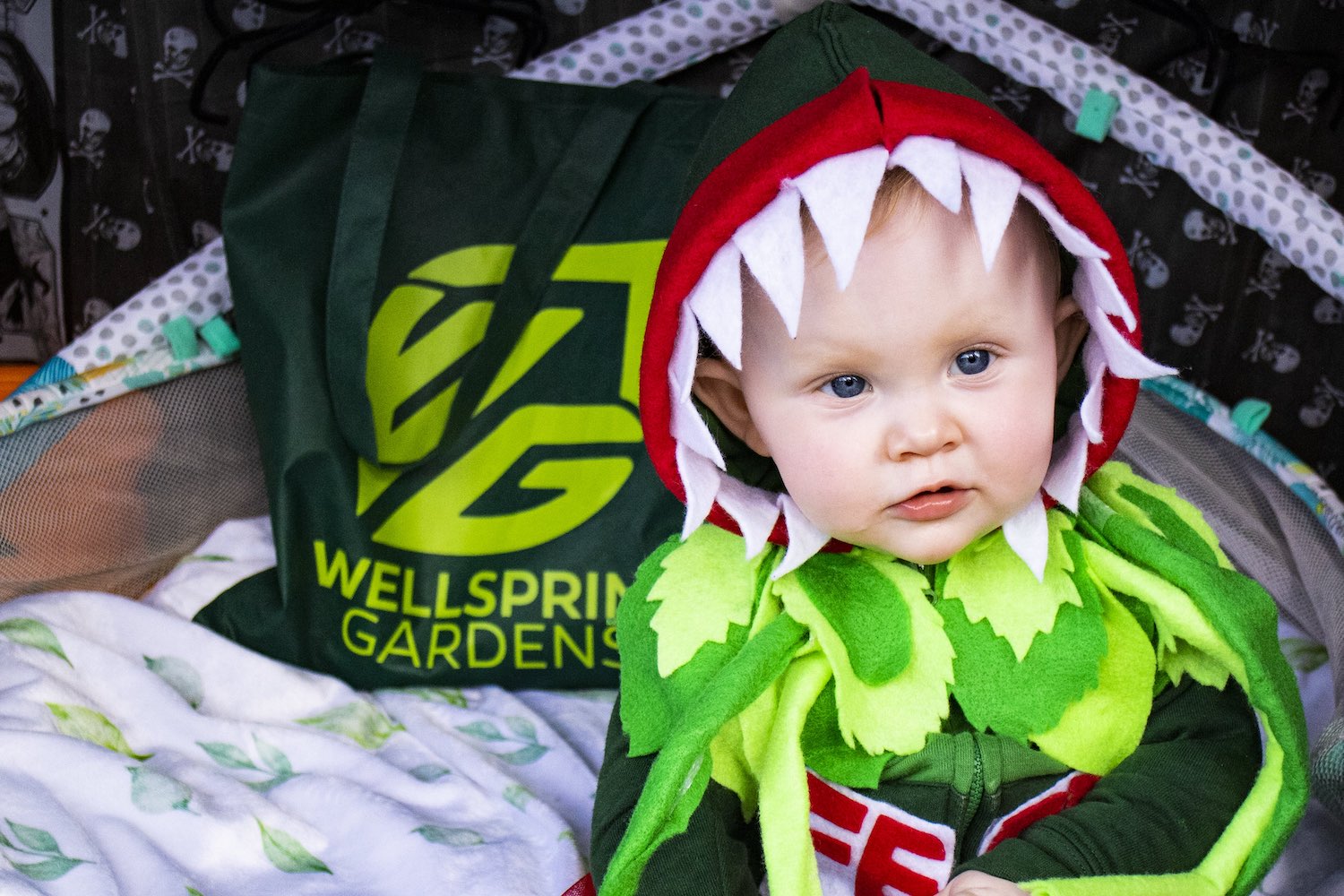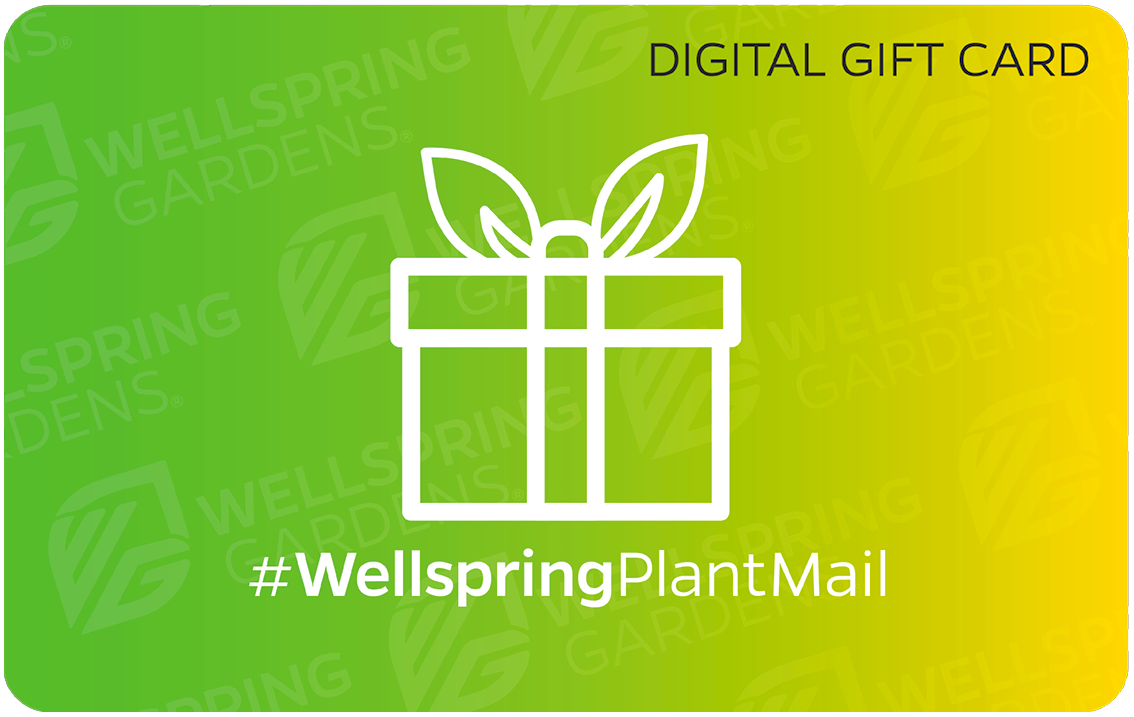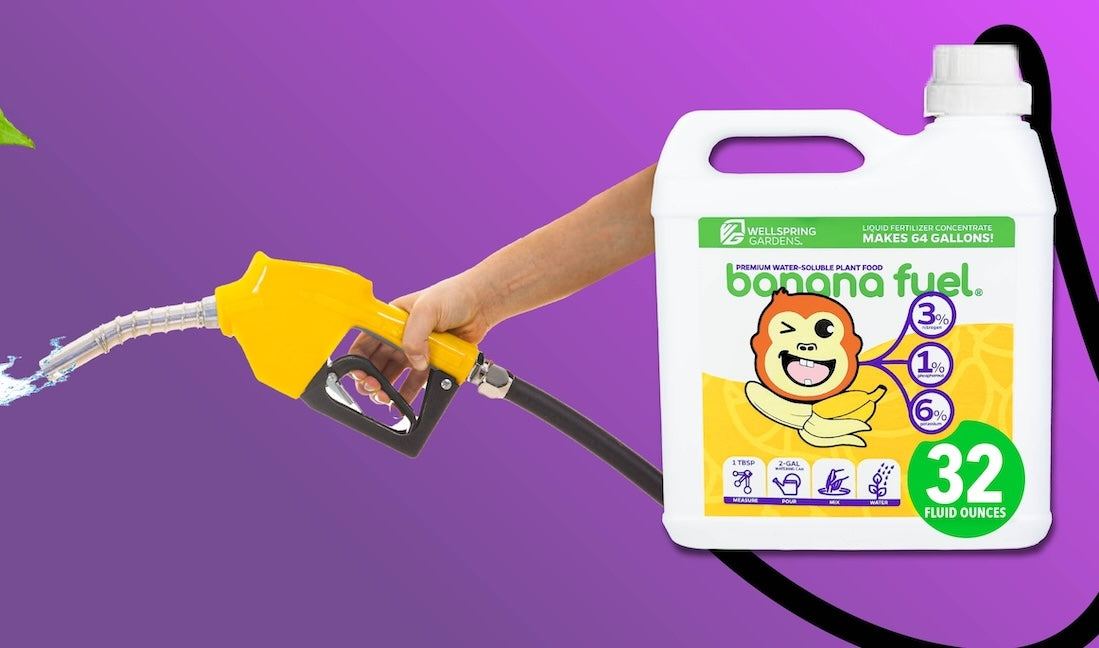Banana Care
From 🍌banana bread to banana splits, it's no surprise that bananas are one of the most popular fruits worldwide. Not only is the fruit versatile and tasty, but the plants also have a distinctive look with majestic blossoms and long, attractive leaves ranging from bold green to deep red. With more than 1,000 different varieties in existence, it may be daunting to find a variety that's perfect for your garden and palate, but we've got you covered with our carefully-curated collection of top banana plants. From the vanilla ice cream taste of Musa Ice Cream to the hint-of-apple Musa Manzano to the miniature Musa Tropicana that can fruit indoors, we bet you won't be able to settle with just one. Read on to learn how to care for your new baby banana.
Banana Care
- Light: Full sun
- Spacing: 8-12 feet
- Soil: Heavy/loamy. Water frequently if planted in sandy soil.
- Water: Keep well-saturated
- Fertilizer: 20-10-20
- Zone: 7b-10 perennial
- Goes dormant? Yes
- Winter care: Water 3-4 times per week and protect from extreme temperatures
- Fruiting and harvesting: as short as 1-2 years
- Common pests: Aphids, thrips, mealybugs, nematodes, mites, and scale
- Toxic to pets? No
Light
Bananas thrive in full sun. While they can take a little shade (up to 50 percent), they won't grow as tall or fruit as readily as they will in full sun. Choose the sunniest part of your yard to give your banana its most natural lighting environment. If planting indoors, provide the sunniest spot available and consider using grow lights. Bananas need at least 6 hours of full sun.
Spacing
For full-size bananas, provide 12 feet in between. For dwarf varieties, provide 8 feet of space between. This spacing will allow plenty of room for the banana mat (garden lingo for the area where banana plants will multiply and send out offshoots). If planting near your home or a building, provide 10 feet of space between the plant and the structure.
Soil
Bananas prefer heavy, loamy (garden language for fertile and clay-like) soil. Just be sure it also has good drainage You can make other types of soil work, too. For example, if your soil is sandy, you can mix in a more fertile soil in a 50-50 ratio. Keep it well-hydrated too since sandy soils tend to dry out faster. Mulching will help retain moisture and as a bonus, it will help keep weeds at bay.
Water
Bananas love water. You’ll often see them growing close to lakes and rivers. Try to avoid super low-lying spots and ditches though if they are not sloped to allow drainage because you'll want to give your banana a chance to dry out somewhat.
Fertilizer
All fertilizers contain three primary nutrients: (Nitrogen (N), Phosphorus (P), and potassium (K). Bananas thrive with a ratio of 15 Nitrogen (N), 5 phosphate (P2O5), and 30 potash (K2O) along with other micronutrients. We’ve got you covered with our Banana Fuel, which contains that exact ratio.
Bananas are heavy feeders, meaning they really thrive when given the nutrients they need. We recommend fertilizing every 7-14 days in the growing season (spring/summer). Once the cooler temperatures of fall and winter hit, you can take a break from fertilizing as your plant goes dormant. Without sufficient fertilization, you may find your banana never fruits, so be sure to satiate your bananas' appetite for nutrients regularly.
Zone
Can I grow bananas where I live? What if I live in a cold place? No problem. Bananas can grow in many climates with a little extra TLC. Below 32 degrees Fahrenheit, bananas will freeze to the ground, but with adequate pre-freeze mulching and covering, they may return. Alternatively, you can even grow bananas indoors.
Most bananas thrive in zones 9-11. What exactly is a plant zone? The U.S. Department of Agriculture created a resource to help gardeners identify the areas in which plants tend to grow well. The resource is a map of the U.S. divided into zones based on the coldest temperatures for the area. How does that help you? Let’s say you live in Ft. Lauderdale, Florida which is zone 10. If you look at the map you will see that the coldest temperature is typically 30 degrees Fahrenheit. If you buy a plant listed within zone 10, you generally won’t have to do anything to protect it in the winter because it can take temperatures down to 30 degrees. But if you live in Gainesville, Florida (zone 9a), where temperatures sometimes dip down to 20 degrees Fahrenheit, the plant will need a little help from you to stay warm.
Knowing the USDA hardiness zone helps green thumbs like yourself strategize on the best plants to grow in your area. But the good news is that if a plant is outside your zone, all you need to do is provide a little winter protection or grow indoors and your plant will be happy and healthy even though it's outside its normal growing zone.
So as you’re shopping, you may want to Google "your city + USDA hardiness zone” to see what your zone is. If you live outside your desired plant’s zone, plan to grow in a container so you can bring it indoors during temperature extremes or grow it indoors all the time. All of our product pages include the plant’s zone so you can make an informed decision.
Goes Dormant
Fall sweater weather, the scent of cinnamon brooms, and the flavor of pumpkin spice emanating from the kitchen all signal the beautiful autumn leaves 🍁 we all love turning from green to a crispy orange and yellow; we know that although the leaves have fallen, the trees are still alive and well; they’re just hibernating (in plant terms, going dormant) until the spring season brings a wellspring of new life. That means as long as you keep them protected from freezing, your bananas will still be alive and well through the fall and winter but won't grow much or flower or fruit until the growing season.
Winter Care
Compare your city’s USDA plant hardiness zone with the plant’s to see how much cold your banana can endure 🥶. If you live outside the zone your plant is listed for, you’ll want to help it keep warm. Here are a few ways to get your banana through those chilly temps:
- Mulch well and cover.
- Plant in a pot so you can bring indoors or on an enclosed patio right next to the house.
- Use grow lights indoors or place next to a window.
Your banana won't need as much water while it's dormant. Water lightly 3-4 times per week, allowing it to dry out somewhat between waterings. This will help sustain it through the winter and be ready to grow in the spring.
Fruiting and Harvesting
It will take regular and consistent watering and fertilizing, but bananas can fruit within 1 to 2 years of planting. The first bunch of bananas you get will be smaller than normal, but the next bunches will be larger. Once you see a flower emerge, you'll know it's getting close to fruiting time. The flower grows out of a stalk which will eventually grow fruit. When the peels are plump and filled out, it's time to pick. It's best to harvest when the fruit is still green. The fruit will start turning yellow a few days or weeks after you harvest, depending on where the fruit was in the fruiting cycle when you harvested.
Did you know that bananas fruit only once? Once you harvest the fruit, you will want to cut back the stalk until it's just a couple of feet tall. Then let it dry out for a few weeks before removing it. You won't get fruit again from that plant, but the good news is that bananas often produce pups (plant lingo for multiple baby plants that are also known as suckers, offshoots, or sister plants) that will replace the already-fruited plant. Removing the old stalk gives the pups room to take over. Plus, you can chop it up in small pieces and use it to help make the ground more fertile for the little pups.
Common Pests
Aphids, thrips, mealybugs, nematodes, mites, and scale are all potential banana pests. What should you do if you see one? Temporarily put your banana outside away from your other plants and then take a cotton swab with a little horticultural soap and/or neem oil—a safe and organic oil that helps combat pests—and touch each insect with it; this will help remove it and will kill the bug as well. If you don't have any neem oil on hand, you can even use a little vegetable oil mixed with water. Once you know the bugs are all gone, it’s safe to bring it back together with your other plants.
Toxic to Pets
Bananas are not toxic to pets so you don't have to worry about your four-legged friends around these guys.
Troubleshooting
My Banana is Not Fruiting
You can grow beautiful tall and full banana plants but never get fruit without consistent fertilization. The fruit is rich in potassium because the plants themselves are potassium lovers. Most soils do not contain the amount needed to satisfy banana plant's cravings, so fertilizing every 7-14 days during the growing season may be the key to growing that sweet, delicious fruit in your garden.
My Banana Has Black Spots on the Stem
Banana pseudo stems tend to bruise because they have very delicate skin. But luckily the pseudo stems also have many layers so underneath the bruised portion it can still be green and healthy-looking. Having bruising on the outside is not bad for the plant and is kind of inevitable. If your banana gets black spots on its leaves though, try spraying with a copper fungicide spray (like Bonide and Serenade for organic gardening) for a few weeks.
How Should I Care for My Banana After It Arrives?
Please give your Banana a little TLC after its journey through the mail 📬. Here are a few steps we recommend:
- Unwrap immediately to provide fresh air to the plant and soil.
- Wait a few days before exposing to full sunlight so your plant can adjust after being in a dark box for several days.
- Always protect from heat and cold because temperature extremes can be stressful or deadly for plants.
- Water. Your baby plant may be parched and even a little wilted but thorough hydration will help it recover.
- Grow out in a larger pot to increase your chances of success—i.e., a quarter gallon—Then transplant to the ground or the next pot size up once the roots fill to the bottom. This will help the plant get sufficient water and nutrients directly to the roots.
What Size Pot Should I Use?
We recommend growing your baby Banana out in a🪴larger pot to increase your chances of success 🏆. Wondering how repotting can make your plant grow more successfully? Repotting helps focus the water and nutrients directly towards the roots. If the pot is too large or if your baby is planted in the ground, the water and nutrients have more room to spread to the wrong places where they aren’t needed. This can be extra detrimental to a baby plant that needs all the support it can get as it is preparing to grow up.
Choosing the correct pot size for your baby Banana can be tricky because it’s not a science and differing opinions abound, but we hope you find the following guidelines helpful:
- Choose a pot that is 1-2 inches in diameter greater than your plant currently is.
- Transplant to the ground or the next pot size up once the roots fill to the bottom.
- Be sure to size up gradually instead of starting with your final pot size.
If you’re planning ahead to see what the ultimate pot size will be once your plant reaches full maturity, one rule of thumb is to plan a half gallon per foot of height. For example, if you’re growing a Banana that can grow up to 10 feet, plan for a 5-gallon pot eventually.
We encourage you to do some further research to find what will work best for your specific plant, goals, and space.
Shop Bananas
Shop for Bananas at Wellspring Gardens.






